Meet the golf course estate manager: David Fraser
Related Articles
The head greenkeeper – and now estate manager of Mortonhall Golf Club in Edinburgh takes us through the challenges involved in maintaining one of Scotland’s premier golfing venues, located hundreds of feet above sea level, and what a course renovation project on a historic venue – following a members’ survey – entailed.
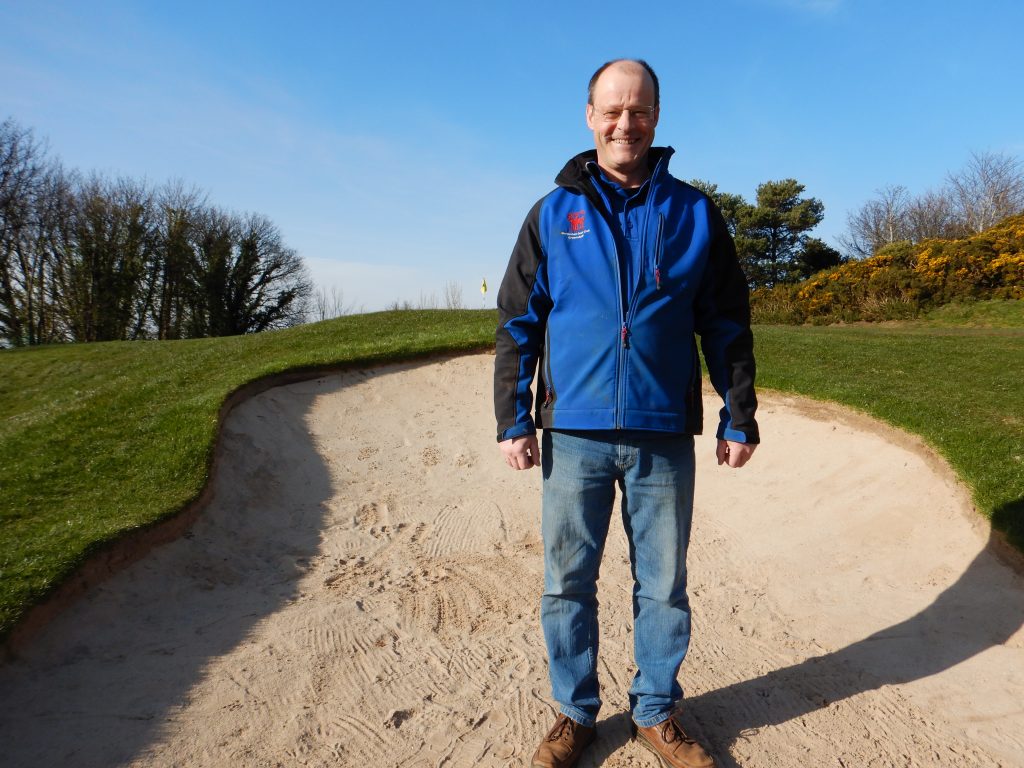
Founded in 1892, Mortonhall is the oldest course in the city of Edinburgh over which golf is still played and is regarded as one of Scotland’s premier clubs. With its immaculate greens and fairways, lined with mature trees and whin-covered outcrops, the course is considered a superb championship test of 6,530 yards, boasting scenic views across Edinburgh, the Firth of Forth and the Pentland Hills.
We caught up with the club’s head greenkeeper (and recently appointed estate manager), David Fraser, to find out about the work that goes in maintaining this attractive venue.
Hello David. Can you give a description of your background and your path to head greenkeeper at Mortonhall GC?
I grew up playing golf at Nairn Dunbar GC in the late 1970s and early 80s and in those days the juniors would help the `greenies` repair `sclafs` on fairways (help the greenstaff repair divots for those not from Nairn). That is definitely where my interest in the job started, I liked the sense of team work and the prospect of working outside on a golf course in the hot, sunny weather. The team work aspect still applies but the hot sunny weather has never really lived up to expectations.
In previous jobs I have tried the civil service, hotel management and studying at university. A move to north London re-kindled my interest in greenkeeping as a career and my first position was at South Herts Golf Club in the early 1990s. The club were hosting an Open qualifier that year and I was really impressed by all the preparations. Interestingly, the staff there had all studied at Elmwood College in Fife, so I moved back to Edinburgh and did the same. Aged 26 it was quite hard to break into greenkeeping in Edinburgh so my first job after college was with the Scottish Agricultural Science Agency, sounds impressive but my job basically involved wandering about wheat fields collecting samples to test for fusarium, which does not just affect golf greens.
I eventually got a start at Mortonhall Golf Club in 1996 and have been here ever since. I have been extremely lucky in that I have managed to progress and grow my career within the one golf club, I have been head greenkeeper now for 15 years.
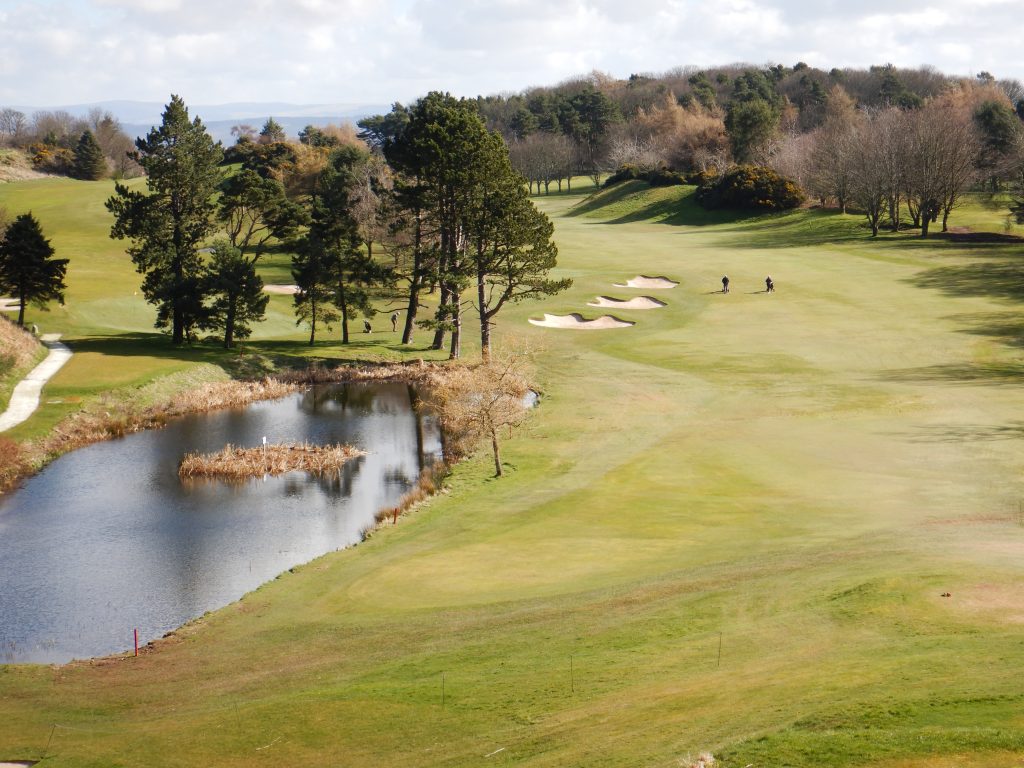
What is the size of your team, what are their names, how do you maximise the resources to ensure a high end product is delivered to the members and visitors?
We have a team of seven full-time and we also take on one or two seasonal support staff from June to September, usually university students, in addition to this we employ junior members on a rota to rake bunkers at weekends over the same period.
The team at Mortonhall consists of Grant Moran (deputy head greenkeeper), Shaun Cunningham (first assistant), Colin McCarther (qualified assistant), Craig Hempseed (qualified assistant), Robert King (qualified assistant) and Gary Brown (level 3 apprentice).
All the team, without exception, are self motivated and have very high standards. If I could explain exactly how this has come about I would be a better manager, it might have something to do with the fact that their combined handicap is still less than my own! All I can say for my part is it is about respect and letting others take on real responsibilities, if the talent is there, use it. Doing this helps to keep the team motivated and interested. All staff are trained to operate all machinery or undertake almost any task on the golf course. Over and above this, in recent years my deputy head has spent at least two years scheduling and managing all day to day work activity on the course and another two years setting and managing the annual budget. Another staff member has taken on full management of environment and ecology and produces a monthly blog for members which has been very well received.
All staff are also involved with further education and Continual Professional Development.
I think it is important in any job to always keep one eye on the future and where you want to be in five years’ time and work towards that from your current position. When the right opportunity comes up you need to be ready to take it, and that is what continued professional development is all about. I think it is important that everyone feels that they can realise their full potential and that their current position is simply a stage they can progress from.
A `team` of seven will always outperform seven individuals. Involving everyone in agreeing a common vision and prioritising objectives is central to forming a good team, as is giving the individuals in that team full responsibility for specific or key objectives. The vision at Mortonhall is quite clear and is simply to become the best in-land course in and around Edinburgh, this is the product and this is what drives everything we do.

Mortonhall Golf Club has a course that is in the top 40 of 560 golf clubs in Scotland and is between 500 and 600 feet above sea level at its highest point. What are the challenges you face in maintaining and delivering such high standard of course and playing surfaces?
At between 500 and 600 feet we are, interestingly, in the top 40 clubs in Scotland in terms of height above sea level – despite being within the city of Edinburgh. This means frost and snow will persist for longer and early spring growth might be two to three weeks behind lower lying courses.
We try to encourage early spring growth with regular liquid feeds of small amounts of nitrate and seaweed, the Headland products such as Turf Hardner and Turfite work well for this. We have always applied seaweed products as soil conditioners but also use some newer biostimulant products such as Terralift Plantmax to compliment the granular fertilisers, the coldstart style granular feeds are great for early spring growth as well.
The geography of the course is such that we do not have any run-off from the surrounding area, which means, compared to some other courses, drainage issues are less severe. The challenges we face with drainage are not so much about countering problems simply to remain open, but are more geared towards improving playability which is more about clever drainage solutions, renovations and secondary drainage operations.
In short, I would say the biggest challenge we face is trying to replicate, as much as possible, links conditions on an in-land course, now there is a challenge.
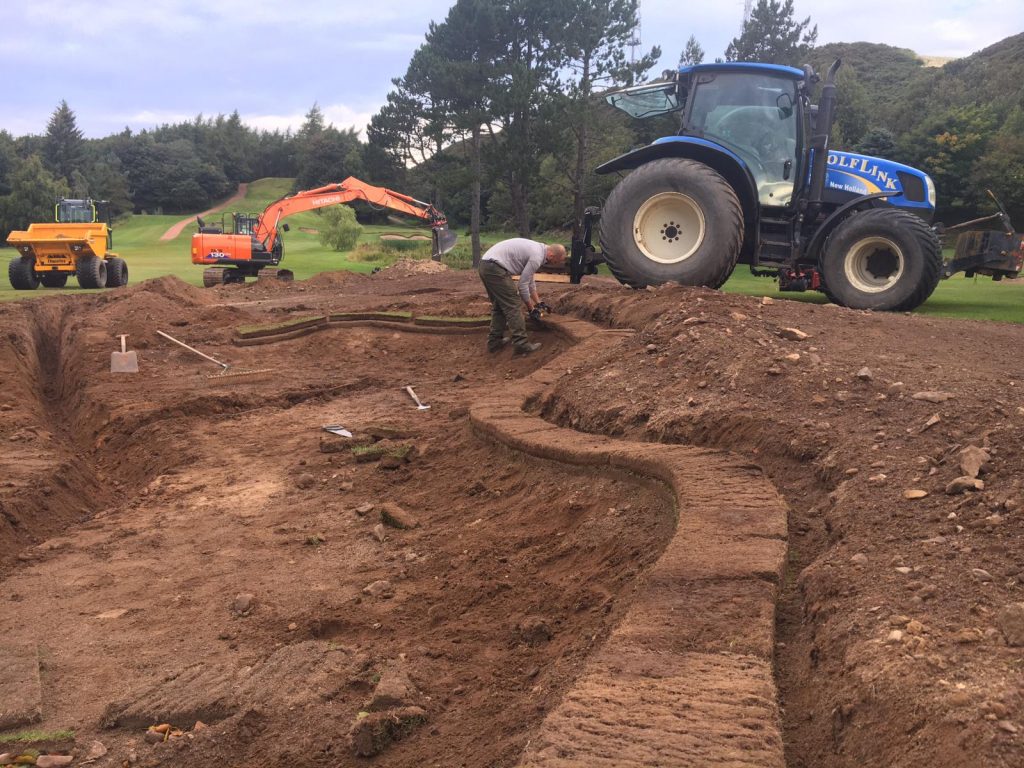
The club recently undertook a course improvement programme. What were the driving reasons for this, who led the project, how was the club assisted by the architect and what was the focus of the renovation project and how many phases was the project run over?
The driving force behind a recently completed improvement project came from a members’ survey several years ago. Member feedback plays an important part in determining everything we do on the golf course. It provides great two-way communication between green staff and members and is a source of rich new ideas. The project started by going back to basics. Our course is over 125 years old. Some bunkers had been unchanged for 75 years and were no longer in the right place or of the right quality for a club of our stature. Playing surfaces were inconsistent, stone penetration and flooding in heavy storms were becoming an issue. We wanted the make the course more challenging for good golfers and more playable for less good and aging golfers.
Over two phases we completely replaced our existing 54 bunkers with 45 new ones, which were better positioned to reflect the modern game, and of much higher quality. The new bunkers tend to be larger and with steeper faces and higher mounding. The total area of bunker sand is much the same – around 2,700 square metres – so our gents SSS is currently retained as 72.
Incorporating the new bunkers into the course involved changing the mowing lines of fairways and creating run-offs on approaches and around greens. Given that this was a bit more than just a bunker renovation project we branded this as the ‘Course Improvement Project’ or CIP for short as this was more positive and better reflected what we were trying to do.
This was a big capital investment project for the club and first thing we did was appoint a very capable project manager. One of our members, Doug Webster, had over 30 years global management experience in the oil industry and had recently retired. Being in the right place at the right time he energetically agreed to manage the CIP project on a voluntary basis. There is a drive just now within the golf industry for clubs to review their management structure and move away from having non-paid council members working in executive roles, however in this case it was the right person for the job. I cannot stress enough how important it is to have someone capable in this role. Doug quickly established a working team consisting of myself, the assistant head greenkeeper and four other members and we were off and running. The team worked together for two years, meeting every two weeks and then almost daily when contractors were onsite.
We appointed the golf architect firm Mackenzie & Ebert to do the design work and again having a professional do this is crucial, not just for the design work but for costing, tendering and communication with members. The communication with members was very important and we had the superb design work from Mackenzie and Ebert, presentations by the project manager and architect Tom Mackenzie, a website with regular updates, billboards in the clubhouse, Twitter feeds, frequently asked questions and a continually manned email address to deal with any concerns. Communication with members is key – you have to bring them with you on the journey and require their support and understanding when the course is disrupted or you hit snags.
Through tendering we appointed the firm Golf Link Evolve, although a relatively new company the experience behind it was huge. The level of expertise in shaping, interpreting the designs, installing drainage, turfing and finishing was just a pleasure to watch and took away any potential stress or worry. The project involved creating 45 new bunkers in two phases, each phase started in early September and the better weather during this month certainly helped with phase two as conditions deteriorated in October 2019. Both phases lasted six weeks from start to finish, and this included lining the new bunkers with Capillary Concrete. This was followed by an extensive period of course recovery, for example we laid nearly 14,000 square metres of new turf. Throughout the project we were able to provide 18 holes of golf in some format to members and the full course was available for reopening on April 1 each year.
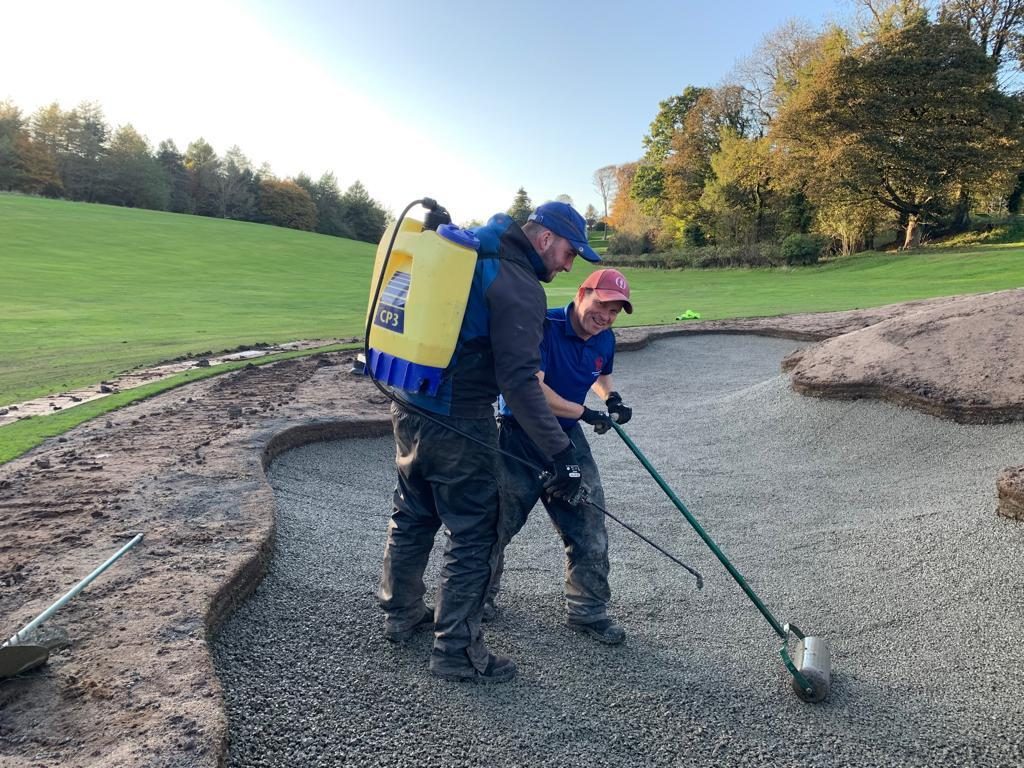
You mentioned that Capillary Concrete was your bunker liner of choice. What was it about the product that appealed to you and what criteria did you use to make your selection and final decision?
We looked at all the available liners for bunkers and settled on Capillary Concrete as the best option for Mortonhall. The main reasons we opted for Capillary Concrete are that it is tried and tested, with some installations now over 10 years old. Ease of installation, it can be installed in-house and in a wide range of weather conditions and also there was a need for a bound material as the sub-soil conditions on the course can be very rocky in places. The material also prevents flooding and sand wash out in extreme weather so the maintenance required to get the bunkers back in play is reduced to a matter of hours.
The hydraulic properties of the material were also a selling point, it can drain rapidly, which is what prevents the wash out, whilst in drier weather capillary action retains or moves water upward, regulating the moisture consistency of the sand.
The choice of liner was one of the most discussed parts of the project. We drew up a table of all the available liners and listed the strengths and weaknesses of each one in relation to our own project. We then talked to and visited a host of other golf courses with experience of a variety of liners, including Capillary Concrete, and included this feedback in the discussion. Capillary Concrete also offered a 10 year guarantee which was reassuring when stepping into the unknown.
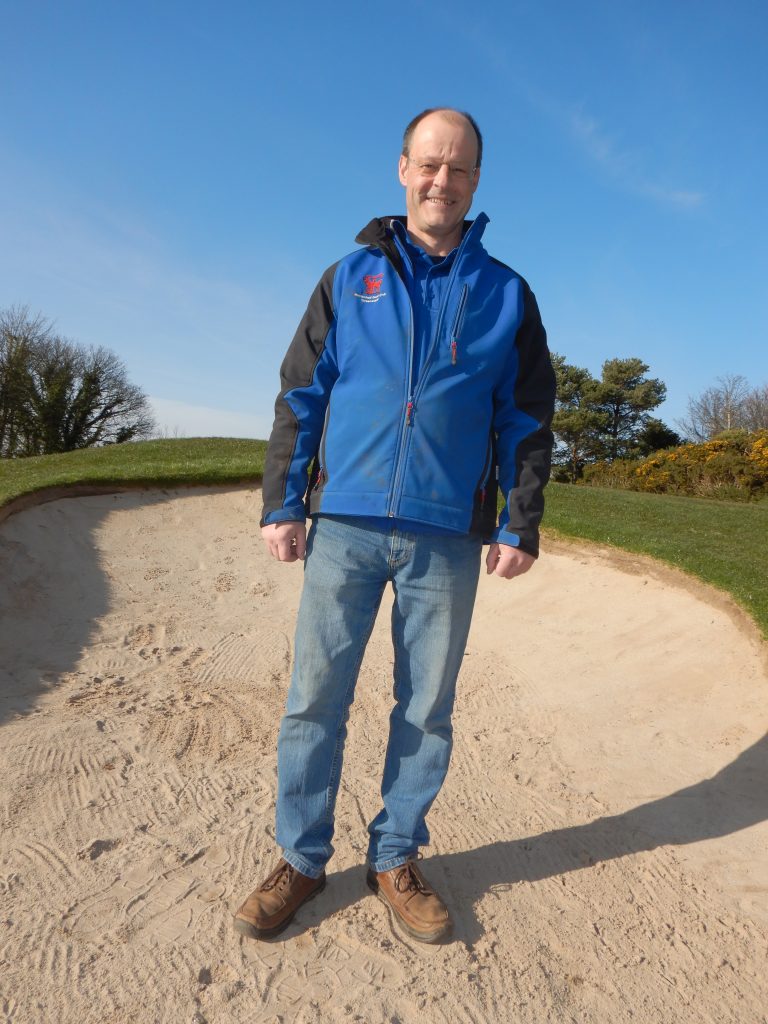
Who installed the Capillary Concrete bunker liners in phases one and two, how long did it take to complete each phase and how easy was it to work with the materials and achieve the desired results you were looking for?
When we did phase one, Neil Thompson from Border Sports Services was on site for the first two days of the installation to instruct us on the correct controls and procedures required. The installation was carried out in-house using our own equipment, all that is really needed is a good tractor and trailer, then tip and shovel evenly into place – plus a lot of hard work form your own staff! Additional equipment required includes plastic depth setters (simply rings cut from a drainage pipe), normal paint rollers, flat trowels and buckets to keep wetting the rollers. Once installed to an even depth of 50mm the wet concrete must be covered for at least 24 hours, to do this we used plastic silage sheets which were 25m x 8m, we then cut them to size. The process is fairly straight forward but the controls and procedures must be followed carefully. With the procedure being new to us and doing all the work with just a three tonne trailer and shovels, the phase one liner took us four weeks to install into 23 bunkers. For phase two, we opted to work with Golf Link who supplied a larger trailer with mechanical off load and more personnel working extremely well together, with our own staff rolling and covering each installation. As a result the 23 bunkers in phase two were completed in only nine days. Between the two phases we laid a total of 160 tonnes of Capillary Concrete.
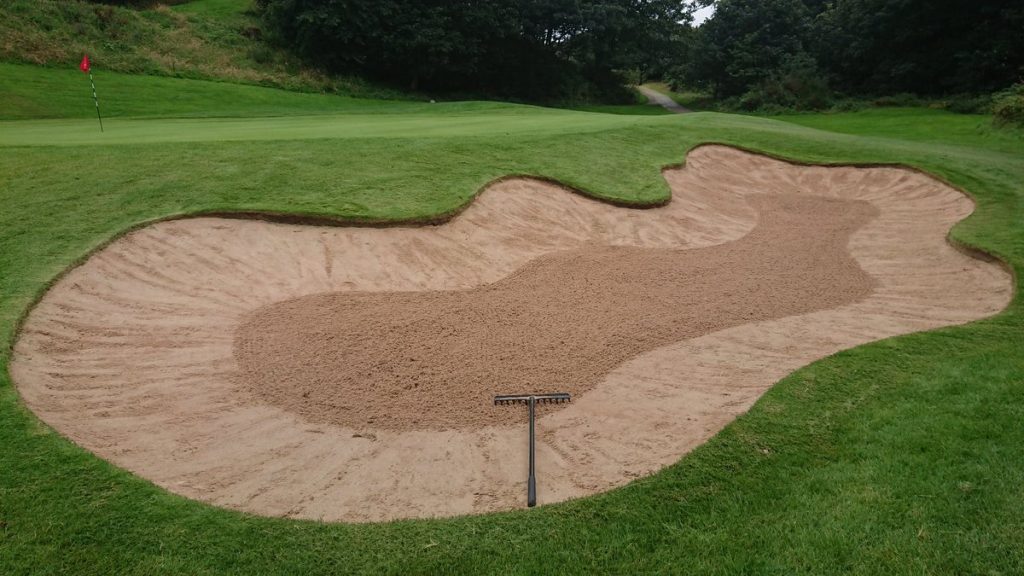
How did you find working with the Border Sports Services team and what in particular drew you to use their services?
We had fantastic support from Neil Thompson at Border Sports Services who are the agents for Capillary Concrete in the UK. As well as the initial two day visit at the start of both phases of the project there were follow up visits to inspect the work and deal with any concerns we had. We were also in almost daily contact during the installation which was very reassuring.
Neil also makes all the arrangements with the local concrete supply plant, by instructing them and supplying the patented polymer material which is a constituent of the Capillary Concrete. On top of all that, he also coordinates the deliveries to the golf club to ensure they arrive at the correct time.
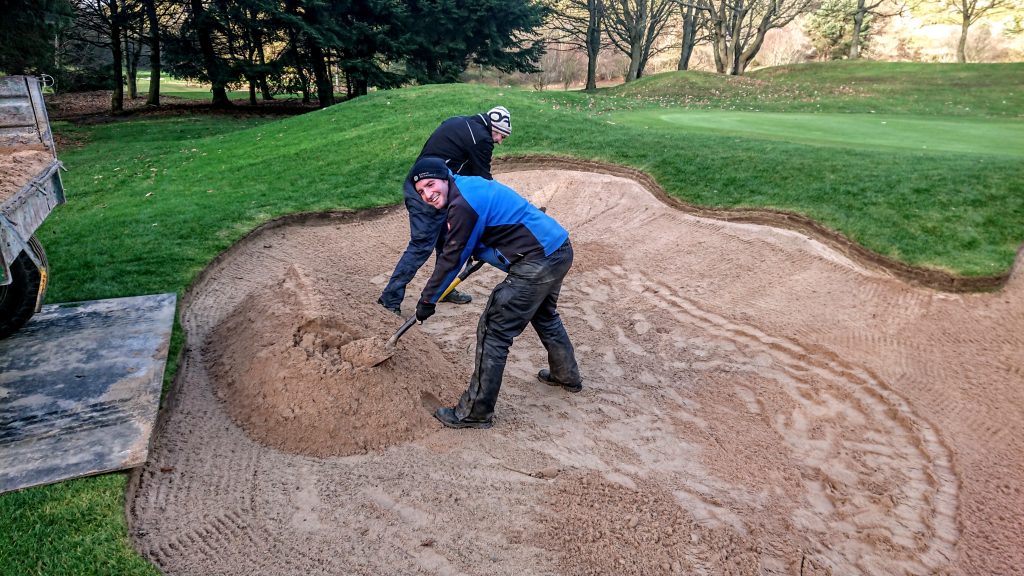
You have started to introduce creeping bents into your greens, what was the reason for this, who are you working with, what results have you seen and have you seen a noticeable difference to the playing surfaces?
The new super-bents as they are known are one of the most interesting industry developments in recent years. Traditional good practice in greenkeeping has generally been towards not using creeping bent grass on golf greens due to likely increased inputs and thatch build up, but that thinking is now 30 years old and standards, machinery and developments have moved on. The maintenance practices and fertiliser use required to manage creeping bent greens are being carried out routinely on most courses simply to meet the modern standards expected in the game.
The research and development that has gone into producing these new bent grasses, such as 007, is fascinating. They have been developed to have growth habits perfectly suited to golf greens, to have good year round colour and built in disease resistance, which as a trait should now be seen as best practice to introduce in course management. The `creeping` aspect or method of propagation is such that these bents should start to compete more successfully with the Poa which is endemic to the vast majority of golf greens around the world.
We have been working very closely with Alan Thomson from Germinal Seed UK and I recently attended a seminar on the subject, organised by them, at Wentworth Golf Club, this included a course walk to see first-hand how these new bent grasses were performing following a well publicised rebuild of the greens at Wentworth in 2017. We are not planning a complete rebuild and only started our first round of overseeding in September 2019 so it is too early for noticeable improvements. We are continuing to work with Germinal and with the support and interest shown by the company I am confident we will see these improvements over the course in 2020.
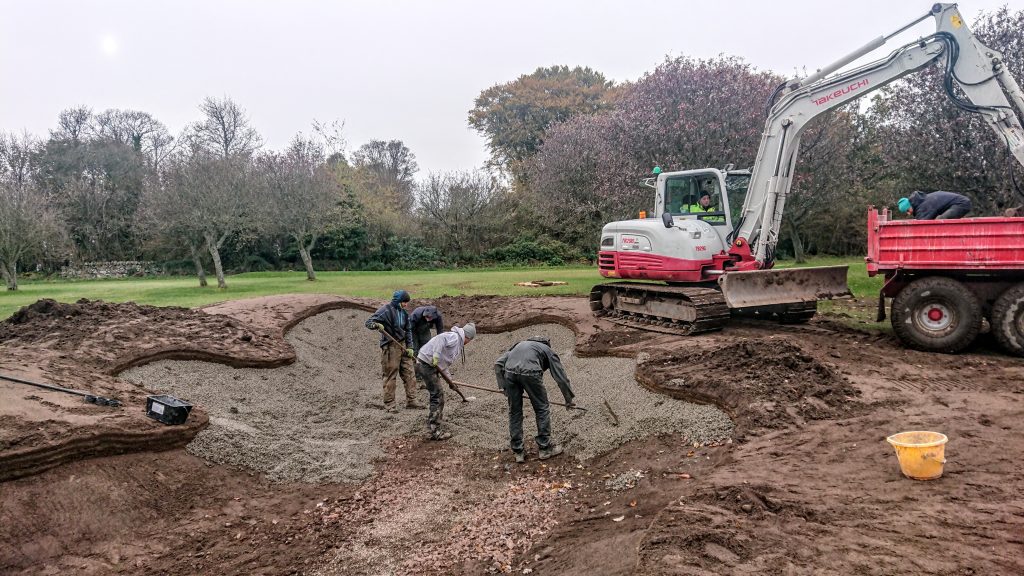
You mentioned you are looking to update a part of the irrigation system. What are you currently using, how old is it, what are the plans to improve the system and who will be undertaking the work?
Our current irrigation system was originally installed in 1981 and consists of grey PVC pipe and an old fashioned two wire control system. Having said that, we have been very diligent when it comes to monitoring the condition of the system and replacing above ground components.
As a result all sprinklers on greens, tees and approaches have been renewed many times over the years as well as all valves and decoders. The pump, control panel and tank liner have also been renewed certainly more than once.
It would still be fair to say though that we have had our money’s worth from the pipe work and wiring, as a result we started to renew this a couple of years ago in stages. It is a mains water system so the supply to the tank and just onto the course were renewed recently and we are currently arranging to renew the pump, controller and main line and wiring this year. Renewing these components will give us the opportunity to update the system with a more sophisticated controller and possibly extend coverage or at least build in the capacity to do this, for example we are going to trial a drip irrigation system for bunker faces and based on this trial we may roll this out around the course. Installing a new mainline also gives us an easy opportunity to put in drinking fountains as well which would be a good addition.
We have had a very long and excellent working relationship with Turf Irrigation Services, Linlithgow, in particular, Stephen Doubray. The fact he has kept our 40 year old system in good working order is nothing short of a miracle and it is only held together by his repairs. That being said, it is only fair we ask TIS to finally replace the system.
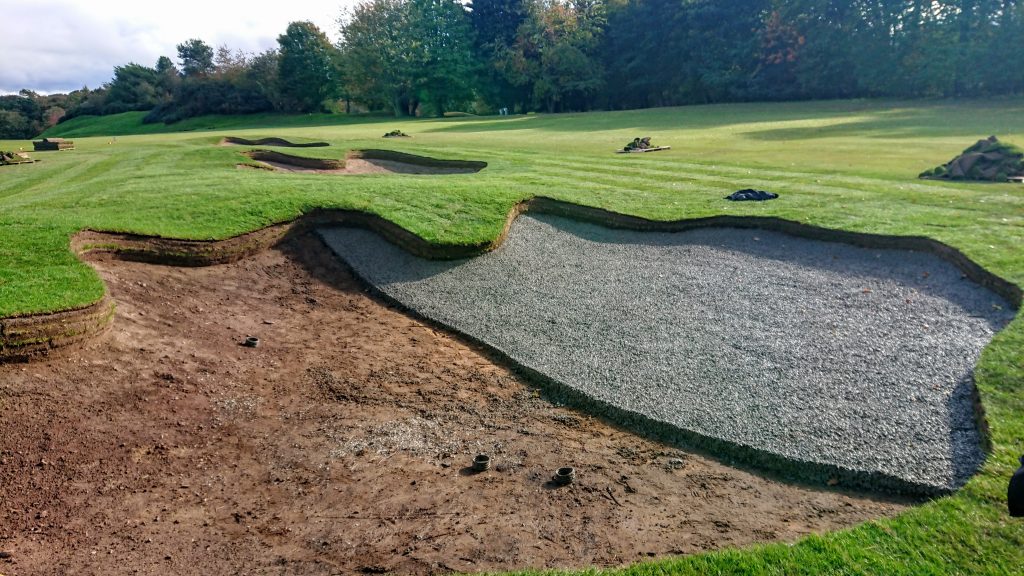 What aeration programme are you running across the course and with what frequency, what benefit does the course see from this?
What aeration programme are you running across the course and with what frequency, what benefit does the course see from this?
We carry out two full renovations on the greens in March and October. This involves a double pass with the Greentek deep scarifier units set to between 7mm and 10mm, a 19mm Vertidrain using a Weidenmann XP6 machine, the depth of this operation varies between 250mm and 300mm. This is followed with a 13mm hollow core operation using a Pro-Core 648 machine, holes are then completely filled, this requires a full 40 tonnes to be worked into the greens for each renovation. In recent years we have introduced a second coring operation into this using smaller 8mm hollow cores which follows on immediately behind the 13mm coring.
Out with these two main renovations we try to get in a couple of passes with the SISIS Deep Slitter between October and March. During the playing season between March and October we use solid tines on the Pro-Core, sizes of tines will vary between chisel tines, 8mm or 5mm needle tines and we try to do this at least every four weeks.
For 2020 we have introduced the Air2G2 air injection as well. This operation has been carried out twice this year so far with another three operations scheduled for later in the season.
Aeration is the most basic and essential maintenance operation required on a golf course, on the greens we have seen the elimination of black layer on all greens, visibly healthier turf and an instant increase in drainage rates immediately following full renovations. This type of maintenance is also essential to enable underlying pipe drainage to function with these greens remaining noticeably firmer for longer.
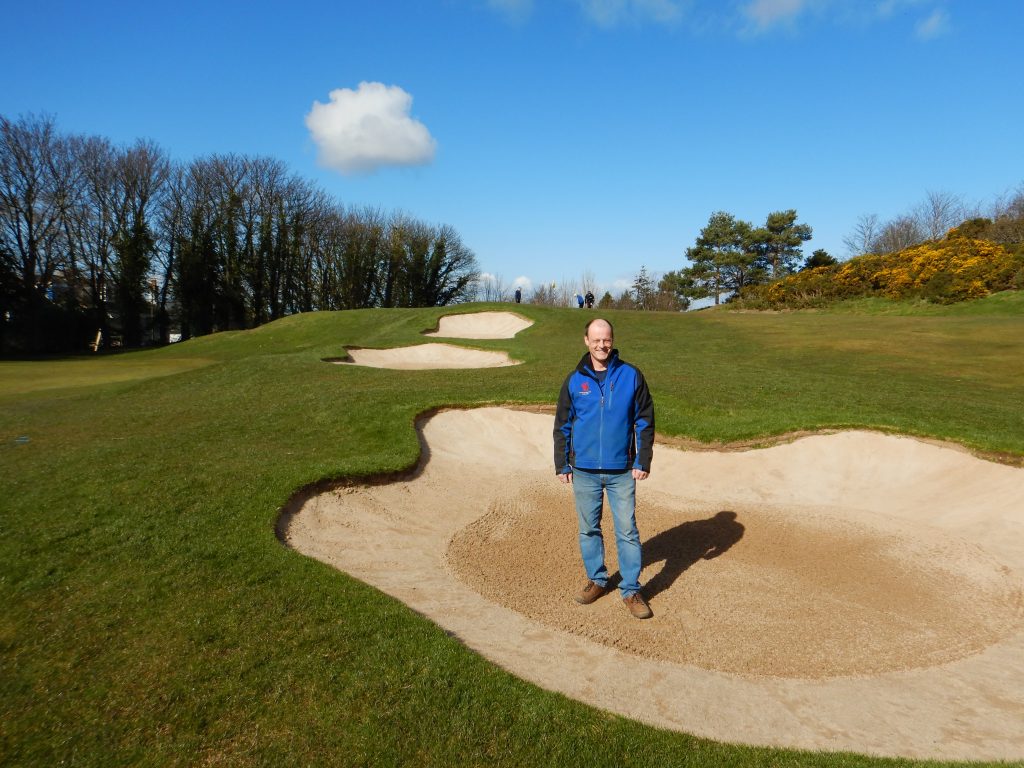
There’s an abundance of trees across the course and 90 per cent have tree protection orders (TPOs). What challenges does this present, how much does this impact on the course, how have you managed the woodland and what are the future plans?
The course property includes 25 hectares or about 60 acres of woodland, the majority consisting of mature beech, sycamore and oak. The majority of this woodland is protected under TPO legislation. The woodland area is bounded by private houses to the South and there is public access through out.
We have a statutory duty of care with regard to neighbours and members of the public, to meet this we have used Eamonn Wall & Co, a woodland consultancy firm, to carry out and document a woodland management plan and tree safety survey. The safety survey is repeated every three years, while the management report provides information which allows us carry out interim inspections. Work arising from this plan or from inspections is carried out by a third party after the correct authorisation from the local council planning dept. In the case of storm damage or a clearly dangerous tree authorisation can sought post any work required.
The management plan also sets out how to manage areas of woodland which require selective thinning, felling or planting. For example a large stand of single species larch all of similar age which would benefit from thinning and more biodiversity. To actually implement the plan would require a level of expertise which is not currently within the workforce as well as a lengthy planning process involving the Forestry Commission and local council.
From a cost point of view it would be easy to regard the woodland as a liability, however when you look at the location and beauty, the number of visitors utilising the area and the interest from the local schools and other interested parties it suddenly becomes a wonderful asset, and that is where we are at the moment.
To try and make the most of this asset we are now working with Tree Line Woodlands Ltd who are a family-run forestry business working in woodland management on a semi commercial basis.
Our green convener, Ian McKerrow, spent a very long 12 months working through the planning and permissions process to enable a woodland management plan to be put in place. Thinning and felling will be carried out by those who have the expertise, but this will extend only to unhealthy trees or where it will benefit the woodland as a whole in terms of sustainability, biodiversity and to improve access for all.
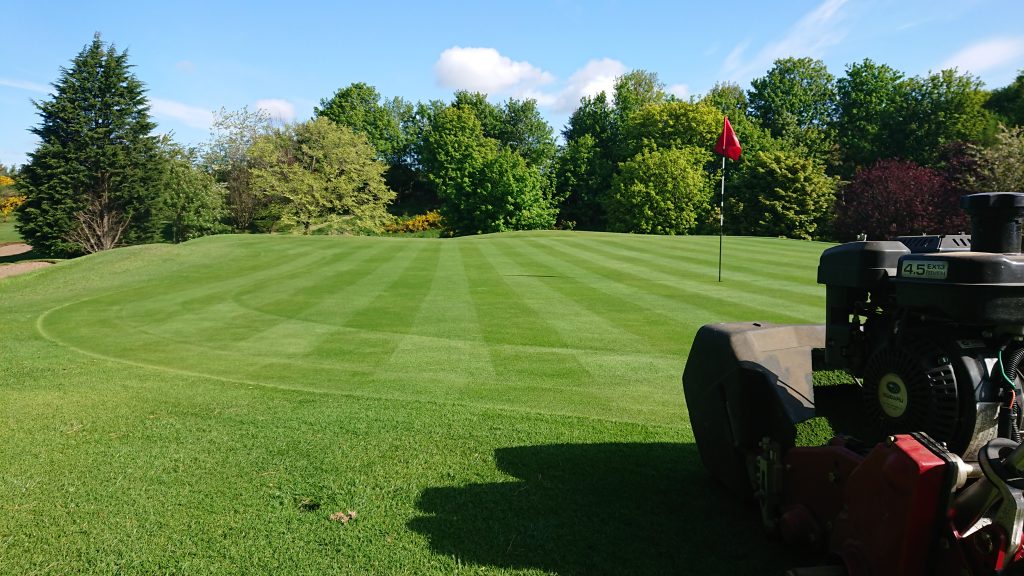
What current machinery fleet are you using and is there a particular piece that you have a preference for or has impressed you and why?
We use mainly Toro mowing machinery, but also have a Kubota out front rotary which is a great machine. The Toros include six hand machines, two 3250 greens triples, a 3100 cylinder mower, a 3500 rotary sidewinder, a 6700 fairway mower and a 4700 rough mower.
The whole Toro range is excellent and very reliable and we currently looking to update some of the machinery to newer hybrid versions such as the Greensmaster 3420 and Reelmaster 5010-H.
The Groundmaster 4700 D semi rough mower is probably the machine which has had the biggest impact on presentation, when we eventually changed from trailed gang units to this big rotary deck machine the transformation was instant.
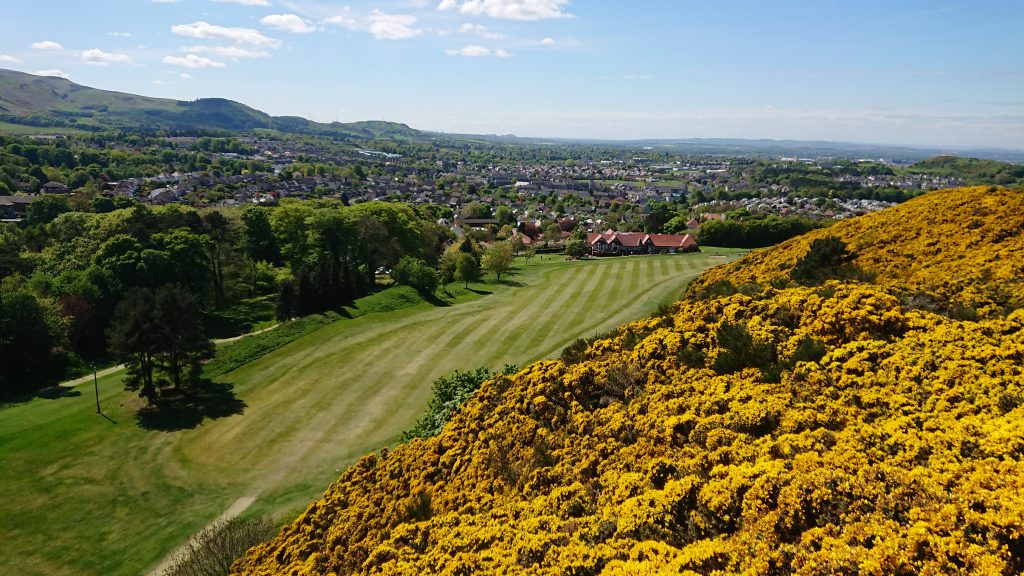
What height of cut do you use across the a) greens, b) tees, c) fairways, d) rough and what man hours weekly?
David Fraser: Mowing heights are greens 3mm, approaches 8mm, fairways 13mm, first cut 22mm, semi rough 44mm. Tees are cut at 11mm. Greens, approaches, fairways and tees are all raised during the winter by about 3mm.
Man hours is something we look at closely as it illustrates very clearly the staff required to maintain an 18 hole golf course. The hours are very consistent over the course of the season and between clubs.
To present the course at its best requires up to 200 hours of mowing. This involves things like hand mowing greens, cutting tees and approaches up to four times in a week and fairways about three times.
Some big figures would be 10 hours to mow fairways and 22 hours to mow all semi rough which we do have a lot of.

What do you think are the strengths that have carried you through your career and current position at Mortonhall Golf Club and how do you look forward to keep the course evolving?
I have never lost interest or enthusiasm and I have always been open to learning on the job. Having a little scientific background means I do like to monitor and measure performance or results, this can be green speeds, soil analysis, pH levels, physical properties of rootzones and so on to the performance of wetting agents, fertilisers, soil conditioners, or even man hours. Greenkeepers in many ways are in the best position to do this sort of thing as we are on the course all the time. There are too many variables for it to count as true scientific research but never underestimate the value of simple close observation. Working the results back into maintenance practices or work scheduling means things do keep evolving and going forward.
We also have a very real culture of continual improvement within the club so I have never felt like the job was done, and there has always been some development project to focus on, these have included building tees, installing drainage, renovating paths, steps or walls and the recent bunker project etc. One of the first projects I took on was constructing a green and growing it in from seed which was a great learning experience.
Training and education are key to developing a good team, what does the club do to ensure it is investing in raising the standard of practice and performance of your green keeping team members?
The club as a whole has always been very encouraging and supportive of further education and personal development and allowing green staff the time to gain tournament experience. In recent years we have had staff at St Andrews and Carnoustie for the Open, Gleneagles- Solheim Cup, Royal Lytham – Senior British Open, Wentworth – PGA Championship and Arizona for the Pheonix Open when two Mortonhall staff went as support. We have also had two staff leave to do the Ohio State Programme, one is now working successfully in Australia and the other has made a permanent move to TPC Boston and is currently looking for the right supers job in the same area.
All the staff at some level are involved with personal development and further education. Elmwood College provide excellent distance learning opportunities and support. We currently have two members of staff working towards their HNC and HND in golf course management, both have received an R&A scholarship to help support these studies. One of our staff attended the Future Turf Managers Initiative which is run by BIGGA and Ransomes Jacobsen, which is an excellent training initiative.
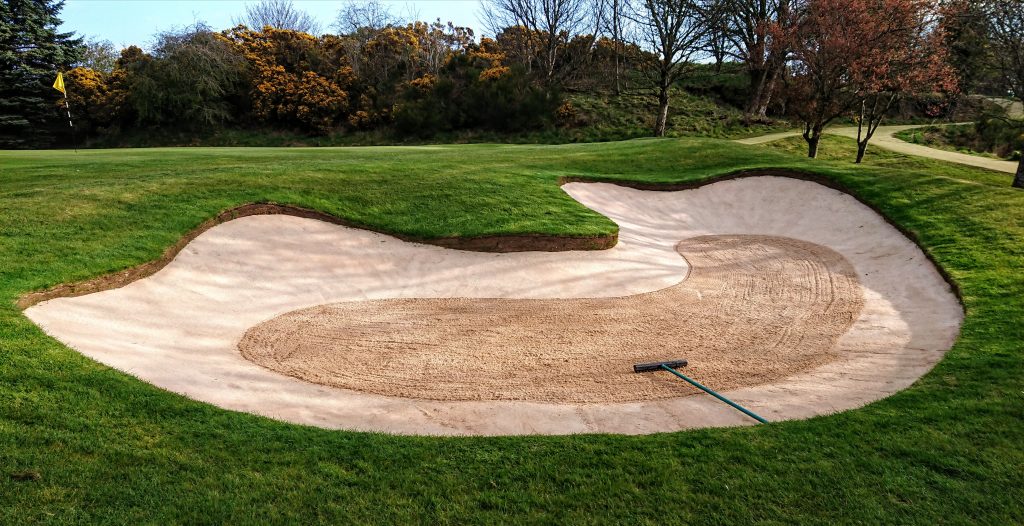
Drainage can present a challenge for the course and your team. Which particular areas are affected and what ongoing remedial work are you undertaking to ease the situation and maintain play?
We have invested a lot in drainage in recent years. Large diameter twin wall carrier pipes with gully pots open to the surface have been installed to deal with low lying areas prone to flooding which has been very effective, also a similar sized perforated pipe has also been installed along the full length of some holes with connections made at regular intervals to enable us to add laterals to the system in the future. The work of installing these large diameter main drains is contracted out to Greentech Sportsturf from Stirling who do a fantastic job.
Like the majority of in-land courses extending the playing season is a big challenge and we have a lot of competition from links courses in the area which naturally fair better over the winter months. We have our own AFT45 trencher which means we can install drainage ourselves, in greens for example. Having our own equipment means we can fine tune operations by working in favourable weather conditions and installing drains slightly deeper and closer together than they might otherwise be, also we re-turf drain lines as we go and every inch of turf is returned to exactly the same position which leaves an excellent finish.
Well installed pipe drainage coupled with green renovation work has ensured the greens we have drained remain playable all year round barring snow, frost and above average rainfall.
We have been dealing with greens on a priority bases and it is very satisfying to see the greens which were are problem now draining and playing firmer than the others.
Wetter winters, and summers for that matter, are now highlighting more extensive areas and this will be the challenge for 2020, we are currently looking at options to possibly work on some areas during the playing season.
The pressures on the course manager to deliver a better product are growing year on year and the level of professionalism is rising with this. What do you think are the qualities now needed to meet the requirements and demands of golfers by someone in your position and how does this help contribute to the business of golf?
Mortonhall is undoubtedly a well run private members’ club with very capable teams working on council, office, pro shop, course and clubhouse. Course conditions are rated very highly during the playing season with all Open events fully subscribed and we currently have a full membership. The big question is, given the current position of the golf industry with falling numbers of players and shifting trends in golf club membership, is having an excellent golf course sufficient to constitute a viable business model for the future?
Unfortunately the answer is no, all the evidence and advice from the golf unions is that clubs need to address their governance and status and adapt constitutions to allow effective modern business practice to prevail in the board room and run the golf club. Full membership needs to be actively managed and clubs need to offer the quality facilities and services the modern market expects.
The course will always be a club’s main asset and source of revenue, but as course managers if we are aware of this bigger picture and accept it we can do our part to contribute to the business as a whole.
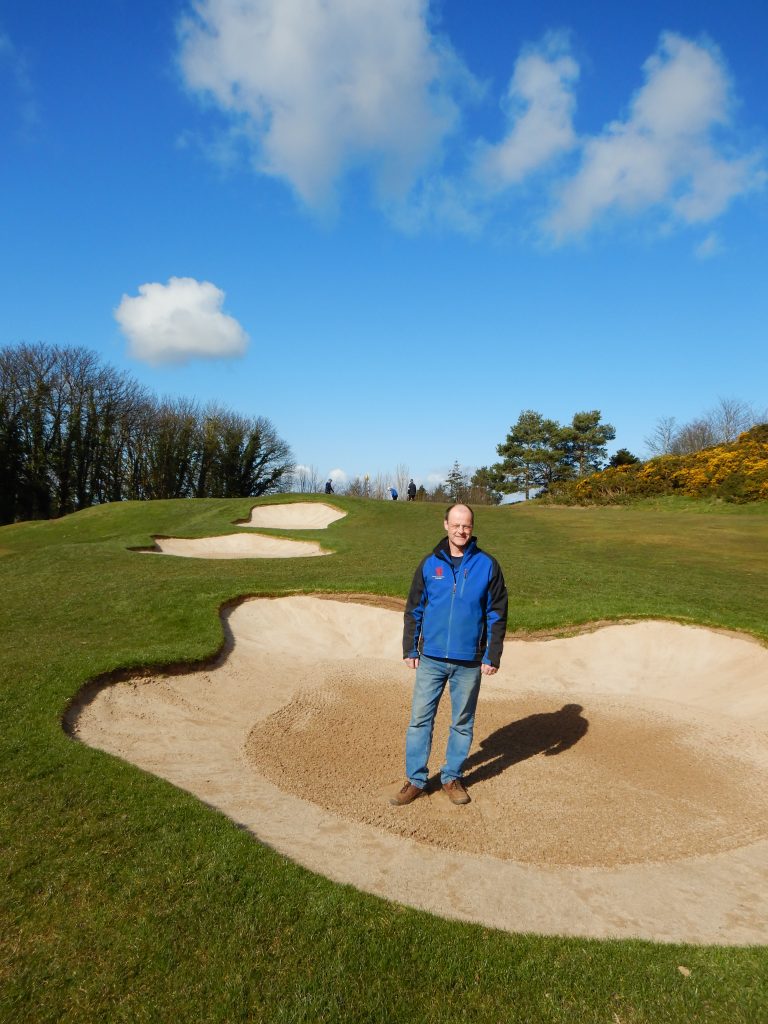
What currently gives you the greatest satisfaction from your job?
Changing holes on the morning of a big competition, all the work is done, greens running at 10 feet on the stimp, bunkers neatly prepared and everything looking stunning and just knowing that 100 plus players are going get their moneys worth, that is very satisfying. Working as part of the team that has achieved this time and time again over 15 years is without doubt my biggest achievement.
On a more personal level the thing that is giving me a great deal of satisfaction and sense of achievement at the moment is that I have been given the opportunity to step back from the golf course and play a role in addressing the challenges facing the club going forward, namely how are we going tackle retaining full membership and delivering the quality facilities and services I mentioned earlier. One of the increasing demands from golfers is for more extensive and improved outdoor and indoor practice facilities. This is an area that we are now looking at closely as part of out continuing development of our ‘product’.
The club recently undertook a very thorough strategic review process to prepare the club to deal with the problems facing the golf industry in Scotland as a whole. It was decided to do it now from a position of strength rather than waiting and having to react to challenges when they happen.
As part of this process I am currently embarking on an acting period as estate manager, charged with improving and making the most of all the club’s assets, this will include practice facilities, car parking, clubhouse, woodlands and so on. The position also includes course development, so introducing ability based tees, practice facilities, drainage, irrigation and just to keep my hand in the position also includes agronomy issues on the course.
There is a similar arrangement on the course where the deputy head Grant Moran is now on an acting period as head greenkeeper.
What advice would you give to youngsters starting out and wanting to pursue a career in the profession?
Learn the basics thoroughly and keep a log of the work you do and be familiar with annual maintenance records such as non mowing operations, sand, fertiliser and chemical inputs, also be aware of the costs and suppliers. In other words be aware of the bigger picture and what work to expect at different times of the year.
Also have a career plan and try to work towards it, you should get support for this from the club.
Be ready and plan to take advantage of any opportunities or positions that might come up as it is a lot harder to prepare an application just prior to a deadline, also your CV is no longer one single document but rather a record of your work experience, for example maintain your own twitter account but be careful to only use it to document work experience and not a night out in the pub.
What changes do you think need to be made to benefit the industry and profession of the greenkeeper?
Golf as a sport is not as popular as it once was. Numbers playing the game in Scotland have been declining for several years with membership down 25 per cent between 2008 and 2018. The situation will be similar for the UK as a whole and no club will be immune to this decline. Key stakeholder across the sport, including Scotland Golf, R&A, England Golf and the PGA have all recognised the value of improving the organisation and structures of clubs to maximise their potential for profitability and growth. Part of the re-organisation within clubs should involve moving away from the traditional committee structure of governance and a shift towards modern business methods. Finding willing volunteers to take on these unpaid roles is also becoming harder as the business of running a golf course has become more complex and demanding.
It would benefit the industry greatly if course managers could step up and help meet this challenge by taking on more responsibility for developing strategies for profitability and growth.
Rather than just managing the golf course, bridge the gap between course and clubhouse and view the organisation as one single business.

























